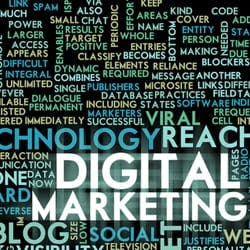Direct-to-consumer marketing has changed and continues to change at a rapid pace. Organisations are struggling to maintain the positioning and alignment of people, process and technology to optimise marketing efficiencies and effectiveness.
It would seem that technology, in both positive and negative ways, is the primary reason behind marketers struggling to maintain a balance with their consumers. For many marketers, technology’s positive impact on direct-to-consumer marketing is the very thing that reveals its negative impact.
Marketers now operate in a world where customer-brand interactions take place not only in-store but in the digital world as well. This digital technology means there is additional, and very different, data marketers need to access if they are to maintain a 360-degree view in today’s marketplace.
This means marketers must add the digital data collected to the centralised database, which has long supported the single customer view. The challenge is the continued reliance on IT to update and manage the marketing database.
The rate of change in marketing requires a similar rate of change in technology to update the centralised database to ensure it is to continue as the “system of record”.
Foundational vs. single view
With the ever-expanding and evolving array of customer data available for marketers to use, it seems unlikely that even the best IT team would be able to modify a single, centralised database as quickly and frequently as would be needed to sustain its place as the source of the single customer view.
As such, a marketer needs an alternative approach to create the complete customer view. Direct-to-consumer marketers need access to their current customer database as well as to additional digital data.
Both are needed to create a balanced view of both the offline and online consumer world. The current database provides a foundational customer view and the new digital data expands the database to create a holistic one.
Haven’t marketers already been connecting to multiple data sources for the single view?
Marketers embraced multiple data sources because they provided faster access to the data they needed, and IT endorsed it because they didn’t need to create and maintain a separate instance of existing data. But access to multiple databases using yesterday’s campaign management (CM) software, will neither meet today’s 1-to-1 marketing needs or scale to meet future evolving needs. Here’s why:
- IT: It is still between the marketer and their data, as the technical team needs to load the data onto the servers that the CM software can access. The clock is ticking while IT lends a hand to marketers.
- The marketer: Marketer’s queries are performed on the “virtual” customer view that is created by the CM software. The data is moved from the source system server(s) to the application server. The clock is ticking while IT assess the impact of a marketer’s new data source on the application server.
- System performance: Processing a marketer’s query through CM software misses a great opportunity to leverage the central record and data processing strengths of the database and server. The clock is ticking while the marketer waits for the query to finish.
Today’s expandable customer view
Marketers still need and value the centralised customer marketing database but also recognise its limitations to keep up with the pace of marketing change. It is also clear that yesterday’s CM software is not an approach to creating today’s ever-changing complete customer view. So where does this leave marketers?
Today’s savvy marketers access multiple data sources to create their single customer view but, unlike yesterday’s CM software, today’s software meets the needs of two demanding constituents in a customer-centric organisation – the marketer and the IT professional!
This new CM solution empowers and enables the marketer to control the definition of their single customer view and allows them secure access to any data source wherever it resides, whenever they need it. Marketers no longer need IT to gain access to data. The marketers’ newfound freedom is a benefit to IT, too, as they will be able to reallocate precious resources to other projects.
This CM software connects to multiple data sources to create the “virtual” view, but uses the power and size of the database software and servers to process a marketer’s queries and segmentations.
Marketers are able to keep the new, more complete customer view and, because the data is accessed at the source, a marketer’s customer view reflects the most current up-to-date information in every query and segmentation.
The single marketing database verdict
The organisations that invested in the single marketing database will continue to derive value from its ability to manage complex data and process real-time updates that creates a customer view, albeit only a foundational one going forward.
Marketers will, more than likely, expand or complete their single customer view through access to multiple databases and sources. The savvy marketers will embrace better CM software that leverages the intrinsic power of the other components that make up an organisation’s marketing system.
– By Lisa Arthur, Chief Marketing Officer, Aprimo.

